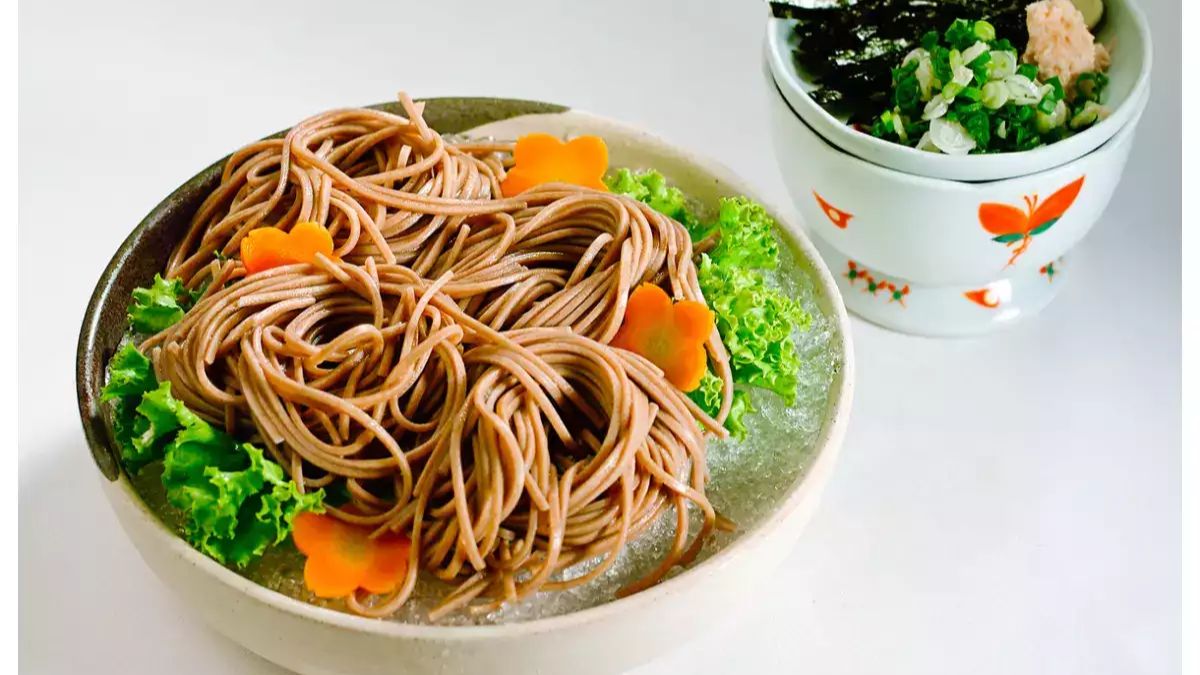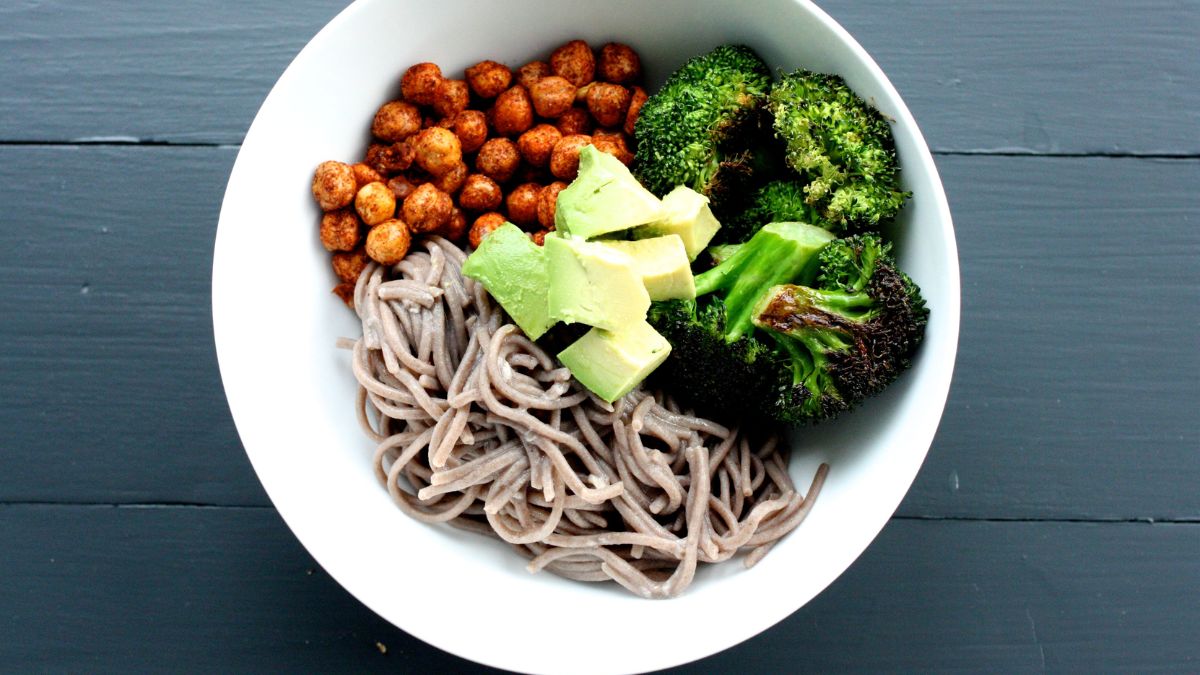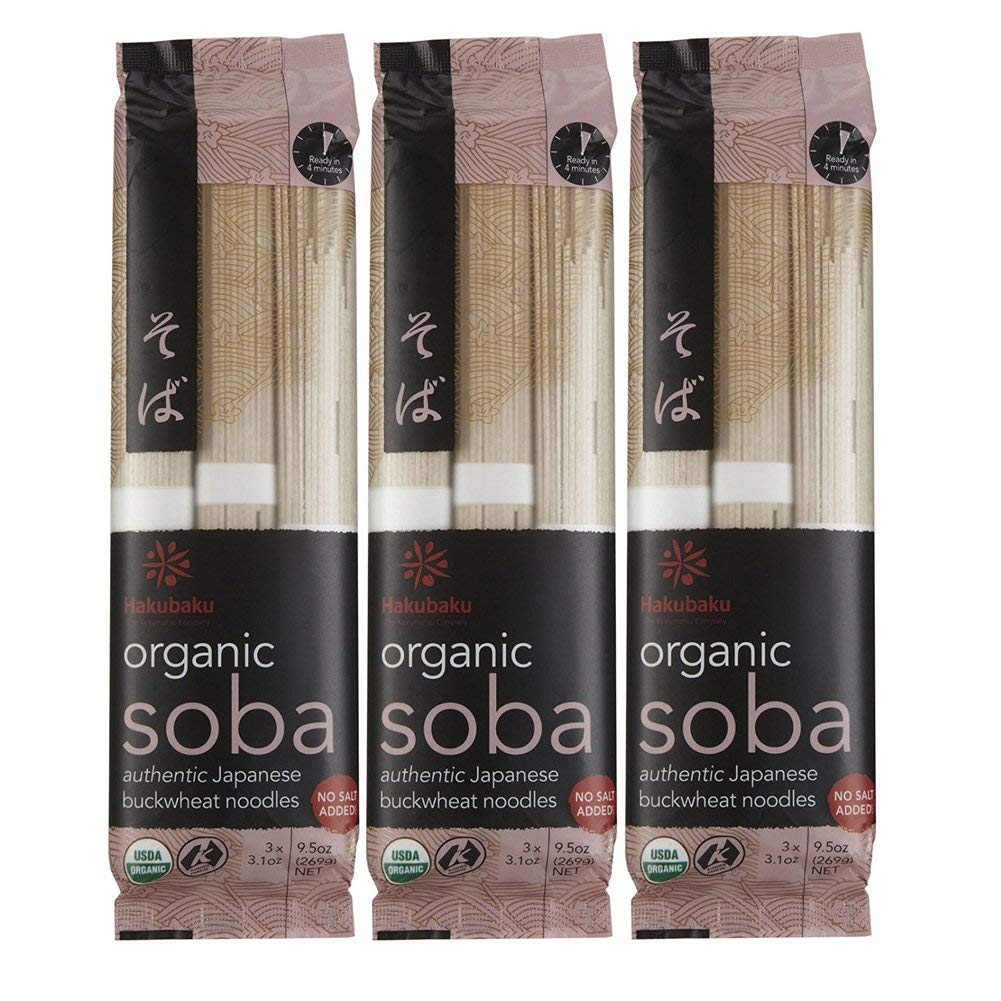Soba noodles are Japanese noodles made from buckwheat flour, with a nutty flavor and dense texture, used in various salads, soups, and stir-fry’s, and often served chilled with a soy-based dipping sauce. Soba noodles are made with buckwheat flour, which doesn’t have gluten, in whole or in part.
They have about the same amount of nutrients as whole-wheat spaghetti and are a good source of protein from plants. When most wheat flour in soba noodles is refined, they are less healthy. Buckwheat has been linked to a healthier heart, lower blood sugar, less inflammation, and lower cancer risk.
Buckwheat flour is hard to work with and breaks readily, so soba noodles are commonly produced using wheat flour. Adding wheat flour, which has a protein called gluten, makes the noodles last longer and costs less to make. Also, some packaged noodles are called “soba” even though they don’t have much or any buckwheat flour. Instead, they have added flavorings, salt, and other things.
Soba Noodles Nutrition Facts
What are Soba Noodles?
Soba noodles are thin Japanese noodles mostly made of buckwheat flour and a small amount of wheat flour. They taste nutty and are dense and slightly chewy. Their color ranges from pale tan to brownish-gray, depending on how much buckwheat flour is in them (more buckwheat equals a darker noodle). You can eat them cold with tsuyu, a soy-based sauce for dipping, or hot, usually in a soup or broth.
Both versions can be eaten any time of year, but the cold version is traditionally preferred in the summer and the hot version in the winter. Traditional soba is made with only buckwheat flour, wheat flour, and water, but some versions add things like seaweed, green tea powder, or wild yam flour.
It come from Japan, where they are a traditional New Year’s Eve meal and can be found everywhere, from fancy restaurants to street stands. It mix water with buckwheat flour and a small amount of wheat flour to make a crumbly dough. The dough is then rolled out into a flat sheet, folded, and cut by hand into thin strands about the thickness of spaghetti. The noodles can be cooked right away, or they can be dried and cooked at a later time. Most people in North America eat the dried kind.
Buckwheat is a grain that doesn’t have gluten, but most soba noodles have wheat flour in them, so they are not gluten-free. Without gluten, the dough would be hard, and the noodles would likely break before or while cooking. A small amount of wheat flour helps the dough stick together, makes it easier to roll out, and keeps the noodles from breaking. Most dried soba noodles are made with 20–25% wheat flour, but you can find gluten-free soba noodles that are made with 100% buckwheat flour.
Soba vs. Somen Noodles
Somen is another type of Japanese noodle that is sometimes compared to soba. Even though some noodles are often served cold and eaten with a dipping sauce, like soba, and are about the same thickness, they are very different. Somen noodles are made from 100% wheat flour and are light in color, just like ramen or udon noodles. It, unlike soba, also have a small amount of vegetable oil.
Somen noodles are another Japanese noodle that is sometimes compared to soba noodles. Even though some noodles are often served cold and eaten with a dipping sauce, like soba, and are about the same thickness, they are very different. Somen noodles are made from 100% wheat flour and are light in color, like ramen or udon noodles. Somen noodles, unlike soba, also have a small amount of vegetable oil.
How to Cook with Soba Noodles?
There are two main ways to make soba noodles: cold and hot. For the cold version, boil the noodles, drain them, and then put them in a water bath and ice to cool. The noodles are then put on a tray or basket, sometimes on top of ice cubes, and served with chopped nori, a type of seaweed, and a dipping sauce made of soy sauce and mirin. Grated daikon horseradish and thinly sliced scallions are also often used as garnishes.
The hot version is made with dashi, Japanese soup stock made by simmering dried bonito and kombu, dried kelp. Dashi has a lot of umami. The cooked noodles are served in the broth with other things like fried tofu, raw egg, or crunchy bits of tempura batter. Once the cold soba noodles have been cooked, chilled in ice water, and drained, they can be used in salads, stir-fries, and as a base or side dish for meat or seafood. They are often served with tempura as a side dish.
Storage Tip
The best time to use dried soba noodles is about a year after you buy them, as long as you keep them in a cool, dry place like you would with dried pasta or rice. If you bought fresh soba noodles, you should use them right away. If you can’t, you should keep them in the fridge and use them within one to three days.
Who Should Consider Eating Soba Noodles?
Authentic, 100% buckwheat soba noodles are a healthy food anyone can enjoy. However, people sensitive to gluten, a protein found in wheat, barley, and rye, may find them especially helpful. Buckwheat is a good choice for noodles if you have celiac disease or are sensitive to gluten in other ways. It doesn’t contain gluten and is healthier than other gluten-free options like rice noodles.
But, as we already said, soba noodles are often made with buckwheat flour and wheat flour. So, it’s important to ensure the noodles are gluten-free and that the manufacturer didn’t mix them with gluten grains. If you’re not sure you’ve ever eaten buckwheat, keep in mind that you could be allergic to it, and it causes a lot of food allergies in Japan and Korea, where people eat buckwheat a lot.
Soba Noodles vs. Traditional Pasta
It have fewer calories, more fiber, and more protein than regular pasta so they won’t increase your blood sugar. “Traditional pasta is made from refined flour and tends to be higher in calories, sugars, and carbohydrates.” Soba noodles are a good alternative to wheat pasta that has fewer calories. Each cup of cooked noodles only has 113 calories, just over 5% of the daily maximum for a 2,000-calorie diet. On the other hand, a cup of white spaghetti has 220 calories, while a cup of whole-wheat spaghetti has 174 calories. If you eat pasta three times a week, switching from white pasta to soba noodles will save you over 16,692 calories annually, which is almost five pounds.
Where to Buy and Use Soba Noodles?
You can find dried soba noodles in Japanese grocery stores, Asian grocery stores, and the Asian food sections of larger, more traditional supermarkets. They can also be bought online. it is usually sold in supermarkets’ ethnic food sections, Asian grocery stores, health food stores, and online. Pure buckwheat soba noodles taste earthy and a little bit nutty. They can be eaten hot or cold. Soba noodles are often served cold with a sauce to dip them in.
They can also be found in broths, soups, stir-fries, and salads with vegetables and sesame dressing. At the end of a meal in Japan, people often eat the cooking water from the noodles. This is called soba. It is made into tea with a leftover dipping sauce called tsuyu. This way, you won’t miss out on nutrients like B vitamins that get into the cooking water. Soba noodles can also be used in your favorite tomato, basil, olive oil, and garlic-flavored Italian dishes.
Are Soba Noodles Healthy?
Since it’s pasta, it has many of the same nutrients as other pasta made with white wheat. It has 200 calories and 43 grams of carbs per 2-ounce serving, almost the same as spaghetti. But, unlike spaghetti, it is a good source of protein, fiber, iron, and other nutrients like zinc.
Health Benefits of Soba Noodles
Buckwheat flour, used to make it, is good for your health in many ways, as shown in many studies that the old ways Whole Grains Council has shared. As a gluten-free grain, it can be used by people who can’t eat wheat. “Buckwheat flour is good for your heart and full of phytonutrients,” say, Hallie Rich and Elyse Schapiro, M.D., R.D., CDN., health and wellness experts. “Antioxidants are what phytonutrients are, and they can help prevent many diseases.”
Rich and Dr. Schapiro say that buckwheat flour is a good source of nutrients like protein, fiber, iron, carbohydrates, and thiamine. Manganese can also be found in buckwheat noodles. A cup of cooked noodles has 426 micrograms of manganese, 19% of a man’s daily manganese needs and 24% of a woman’s.
Manganese is a part of many enzymes, including those that turn food into energy and antioxidant enzymes, which eliminate harmful free radicals to keep cells from getting hurt. Manganese also makes collagen, a protein that helps wounds heal and keeps cartilage and bone in good shape. Buckwheat noodles don’t have many essential vitamins, and other than manganese, they don’t have much in the way of minerals 100% buckwheat flour can be just as healthy as fruits and vegetables. This doesn’t mean you should only eat buckwheat flour, not fruits and vegetables.
Health Drawbacks of Soba Noodles
Because of their glycemic load, it can affect how much sugar is in your blood. Food’s glycemic load considers how many carbs it has and how quickly it raises your blood sugar after eating it.
Its high glycemic load of 22 can dramatically alter blood sugar levels. Choose beans and whole grains like whole-grain pasta instead of high-glycemic load (G.L.) foods.
Check the label before adding soba noodles to your diet, especially if you’re gluten-free. Rich and Dr. Schapiro say, “Don’t just assume that soba noodles are 100% buckwheat. Many of them contain ordinary, half-refined, and half-buckwheat flour, so you may not obtain the benefits you wanted.” “So read the labels and ensure that buckwheat flour is the first thing on the list.”
Conclusion
There are several brands and types of it in stores and online, each with key differences. Buckwheat flour and water are the only ingredients in “Jabari soba,” the most traditional variety. But along with buckwheat, many soba noodles are also made with refined wheat flour. Hagiwara sometimes describes noodles with 80% buckwheat and 20% wheat flour. Also, some “soba” noodles have more wheat flour than buckwheat flour. This is when wheat flour is the first ingredient, making it the most important one.




